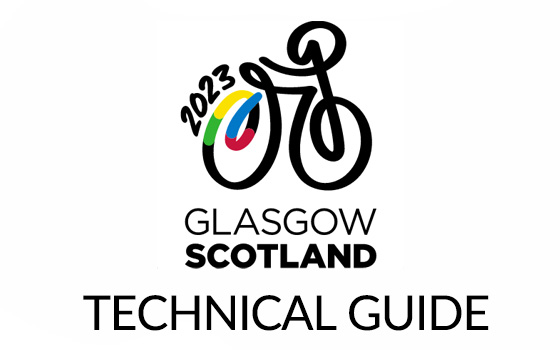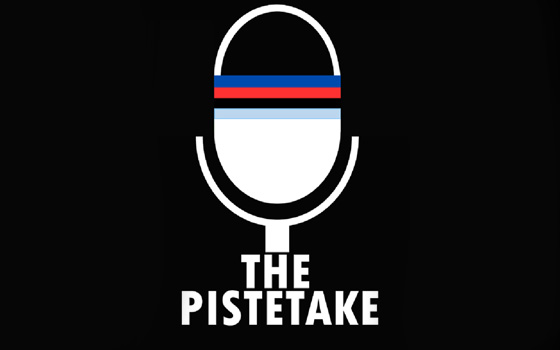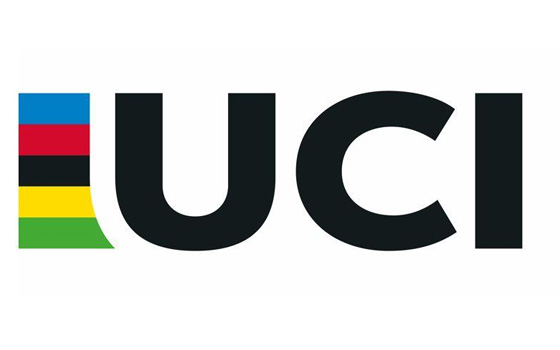Track Cycling Events - Keirin
The Keirin is a mass start Track Cycling event for Sprinters, created in 1948 in Japan but not included in the Olympic programme until 2000. Traditionally only six riders contest a Keirin but the number of riders can vary on the event, for example in the Japanese Keirin Series nine riders line up for each event.
Held over two kilometres (8 laps on a 250m Track, 6 laps on a 333m Track and 5 laps on a 400m Track), riders draw lots prior to the race to determine starting position behind the pacer which is usually a Derny, Motorcycle or non-competing rider.
The riders are required to remain behind the pacer, but are allowed to move position as much as they like as long as they remain behind the rear wheel of the Derny/Pacer.
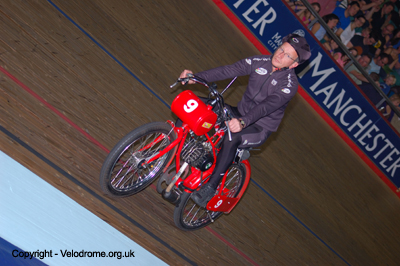
The Derny starts at the deliberately slow speed of about 25 km/h, gradually increasing in speed and leaves the track approximately 600-700 meters before the end, at a speed of about 50 km/h.
As the Derny/Pacer leaves the track, this is when the racing begins with the rider who completes the remaining distance first, the winner.
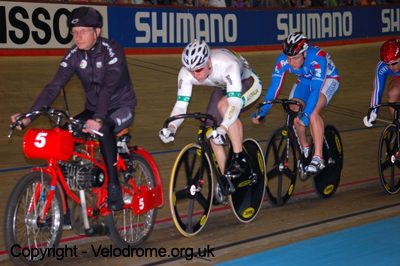
In competitions, this event is conducted in several rounds in order to reduce the number of competitors to one "final" round of ideally six riders. Eliminated cyclists may get the opportunity to try again in the repechages.
Women also contest the Keirin with the only difference being that races are held over 1.5km (6 laps on a 250m Track, 4 laps on a 333m Track and 2 laps on a 400m Track) and the Derny leaves the track at 45 km/h. 2012 will see the Women's Keirin step up a level as it will be included in both the Olympic Games and Japanese Keirin Series for the first time.
Keirin in Japan
Keirin racing is one of the most popular sports in Japan due to it being one of the only sports the public are able to bet on.
In 1957 the Nihon Jitensha Shinkokai (NJS) or Japanese Keirin Association (JKA) was founded to establish a uniform system of standards for the sport in Japan which is today regulated by the JKA.
Aspiring professional keirin riders, the vast majority of which are Japanese, compete for entrance into the JKA Keirin School, however entry standards are that high that only ten percent of applicants are accepted.
Riders in the Keirin School then undergo a strict15 hours per day training regime working towards graduation exams in order to be NJS approved and become eligible to participate in professional Keirin races in Japan.
Japanese Keirin races start with all nine riders presented to the crowd and bowing in respect before attaching their bikes to the starting gate. Each rider is assigned a number and colour for betting purposes in order to make them easily recognisable to the crowd.
At the sound of the gun, the riders leave their starting blocks and attempt to gain position behind the pacer, which is this instance is a non-competing rider wearing purple
As the pace quickens, the pacer will usually depart the track with between one and two laps remaining, but the actual location where the pacer leaves varies with every race.
With 1½ laps remaining, officials begin sounding the bell at increasing frequency until the riders come around to begin the final lap of the race. In addition to informing riders that they are approaching the final lap the sound of the bell and it's increasing frequency adds to the excitement of the racing as the pace further increases and riders start to attack.
The race is monitored by four referees, each located in a tower next to one of the four corners and after every race, each of the four referees will wave either a white or red flag. A white flag indicates that no infractions occurred in that area. A red flag, however, signals a possible infraction and launches an inquiry into the race. Judges then examine the race on video to decide if a participant committed a rules violation; if so, he is disqualified and retires from the remainder of the meet.
Japanese Keirin - Ranking and Race Grades
Riders are classified in terms of ranking, this ensures that the level of ability of the riders in each race is of a similar standard. In total there are six ranks, SS is the highest followed by S1, S2, A1, A2 and A3. All new Keirin graduates start of as A3 and work their way up by competing in events.
You can identify the rank of a rider by the type of shorts they wear during a race. Those in the A Class (A1, A2 and A3) wear Black shorts with a Green Stripe with White Stars at the side. S-Class competitors (S1 and S2) wear a Red Stripe with White Stars whereas the SS Class have Red Shorts with a Black Stripe, White Stars and special insignia.
The SS Class was only introduced in 2007 as a way of idenitifying the best Keirin riders as judged by the NJS at the end of each year.
As with Rider Ranking, each race is all assigned a grade, with highest graded events are GP, GI, GII and GIII, reserved only for S-class riders. The next level is FI events which any S-Class or A-Class rider can enter. The owest graded events, FII which are reserved for A-class riders.
The GP grade designation is reserved for the Keirin Grand Prix, a three-day meet held at the end of December for the year's top keirin competitors. The meet ultimately concludes with the Grand Prix race itself, which determines the annual Keirin racing champion.
As of December 2008, the nine competitors for the Keirin Grand Prix race are determined in the following order of priority: -Winners of each of six GI events during the year (Keirin Festival, Japan Championship, Prince Takamatsu Memorial Cup, Prince Tomohito Cup, All-Star Keirin and All-Japan Selection),
-Japanese medal winners of cycling events from the Summer Olympic Games, if they are held in the same year,
-Competitors recommended by a Keirin selection committee,
-Competitors that have earned the most money from finishing first, second or third in Keirin events during the year, and finally,
-Competitors with the highest average race score during the year.
Once the Grand Prix field is determined, the nine competitors are assigned the SS rank and retain it for one year. The next nine competitors that are ranked under this system also receive the SS rank and compete in the GI SS Cup held one day prior to the Grand Prix. Also part of the Grand Prix meet is the GII Young Grand Prix, which is open to the best riders that started Keirin riding within the last three years; it is the only Keirin race of the year in which both S-class and A-class compete in the same race.
Another prestigious event on the annual keirin racing calendar is the GI Japan Championship. Held every March over a period of six days, it is the longest single race meeting of the year.
Each of the keirin velodromes are generally permitted to host one event per year of either GI, GII or GIII designation. The remaining events at each track consist of a combination of FI and FII races for a total of approximately 70 race days per year. On average there is one GI or GII event every month and one GIII meeting per week on the annual calendar.
Race schedule
On the first day of competition, the better keirin competitors are assigned to races of higher caliber, while others are assigned to low-caliber races. Keirin racers are guaranteed to compete on each day of the meeting unless they are disqualfied from a race or retire from the meet for any reason - in which case reserve competitors are called up to fill in the lower-caliber races.
Below is a schedule of races conducted during a typical three-day FI event (open to both S-class and A-class riders).
Each Race is commonly referred to as R? where ? is equivalent to the numbers outlined below
DAY 1
-Races 1-3: A-class Preliminary (Low Calibre)
First two finishers in each race advance to Day 2 Semi-finals, Third place finishers advance to Day 2 Selection, Remaining riders compete in Day 2 General
-Races 4 & 5: A-class Selection (Medium Calibre)
First six finishers in each race advance to Day 2 Semi-finals, Remaining riders compete in Day 2 Selection
-Race 6: A-class Special (High Calibre)
All riders compete in Day 2 Semi-finals, After six races, S-class riders compete, advancing to the next day's races in the same manner as the A class:
-Races 7-9: S-class Preliminary
-Races 10 & 11: S-class Selection
-Race 12: S-class Special
DAY 2
-Races 1 & 2: A-class General
First two finishers in each race advance to Day 3 Selection, Remaining riders compete in Day 3 General
-Race 3: A-class Selection
First three finishers advance to Day 3 Special Excellence, Fourth and fifth place finishers advance to Day 3 Selection, Remaining riders compete in Day 3 General
-Races 4-6: A-class Semi-final
First three finishers in each race advance to Day 3 Final, Fourth through eighth place finishers in each race advance to Day 3 Special Excellence, Ninth place finisher competes in Day 3 Selection
S-class riders advance to the final day in a similar manner:
-Races 7 & 8: S-class General
-Race 9: S-class Selection
-Races 10-12: S-class Semi-finals
DAY 3
-Races 1 & 2: A-class General
-Race 3: A-class Selection
-Races 4 & 5: A-class Special
-Races 6 & 7: S-class General
-Race 8: S-class Selection
-Race 9: A-class Final
-Races 10 & 11: S-class Special Excellence
-Race 12: S-class Final
Japanese Keirin - Equipment Standards
As a result of pari-mutuel gambling (tote) a strict series of standards for equipment was implemented by the NJS.
All riders use very similar bicycles, so that no rider will have any advantage or disadvantage based on equipment. All bicycles and equipment must be built within strict guidelines set by the NJS, by a certified builder using NJS-approved materials. The products are then stamped by NJS and only equipment bearing this stamp may be used. However, it should be noted that the NJS standard is to ensure that no rider will have any advantage or disadvantage based on equipment, and does not necessarily relate to quality or standard of manufacture.
For example, 36 spoke wheels are allowed but not 32 even though these are typically lighter and frames must be built by a very limited number of approved builders.
NJS approved equipment often sells for more than comparable equipment because of its specific use, build requirements, and limited manufacturers the majority of which are Japanese in order to support the Japanese economy.
NJS-approved equipment is not required for keirin races outside Japan.
Japanese Keirin - International Riders
Every year a selection of International Riders are invited to attend the Japanese Keirin School to undergo the same strict induction processes that the Japanese professional riders experience. If they graduate from the school they are able to race in the professional Keirin across Japan for the length of their contract, as determined by the JKA. Whilst the prize money on offer for each event is high, the International riders unfortunately do not have the chance to take home all of their winnings due to the high taxation inflicted upon them from various sources in addition to other factored in expenses meaning that they earn only a fraction of the large figures they 'win'.
International Riders, as with all Riders also have to abide by strict censorship rules due to the risk of race fixing by gamblers. This means riders have no contact with the outside world during events, if for example they make online diary/blog entries during an event it has been known for riders to be thrown out of the JKA system.
Held over two kilometres (8 laps on a 250m Track, 6 laps on a 333m Track and 5 laps on a 400m Track), riders draw lots prior to the race to determine starting position behind the pacer which is usually a Derny, Motorcycle or non-competing rider.
The riders are required to remain behind the pacer, but are allowed to move position as much as they like as long as they remain behind the rear wheel of the Derny/Pacer.

The Derny starts at the deliberately slow speed of about 25 km/h, gradually increasing in speed and leaves the track approximately 600-700 meters before the end, at a speed of about 50 km/h.
As the Derny/Pacer leaves the track, this is when the racing begins with the rider who completes the remaining distance first, the winner.

In competitions, this event is conducted in several rounds in order to reduce the number of competitors to one "final" round of ideally six riders. Eliminated cyclists may get the opportunity to try again in the repechages.
Women also contest the Keirin with the only difference being that races are held over 1.5km (6 laps on a 250m Track, 4 laps on a 333m Track and 2 laps on a 400m Track) and the Derny leaves the track at 45 km/h. 2012 will see the Women's Keirin step up a level as it will be included in both the Olympic Games and Japanese Keirin Series for the first time.
Keirin in Japan
Keirin racing is one of the most popular sports in Japan due to it being one of the only sports the public are able to bet on.
In 1957 the Nihon Jitensha Shinkokai (NJS) or Japanese Keirin Association (JKA) was founded to establish a uniform system of standards for the sport in Japan which is today regulated by the JKA.
Aspiring professional keirin riders, the vast majority of which are Japanese, compete for entrance into the JKA Keirin School, however entry standards are that high that only ten percent of applicants are accepted.
Riders in the Keirin School then undergo a strict15 hours per day training regime working towards graduation exams in order to be NJS approved and become eligible to participate in professional Keirin races in Japan.
Japanese Keirin races start with all nine riders presented to the crowd and bowing in respect before attaching their bikes to the starting gate. Each rider is assigned a number and colour for betting purposes in order to make them easily recognisable to the crowd.
At the sound of the gun, the riders leave their starting blocks and attempt to gain position behind the pacer, which is this instance is a non-competing rider wearing purple
As the pace quickens, the pacer will usually depart the track with between one and two laps remaining, but the actual location where the pacer leaves varies with every race.
With 1½ laps remaining, officials begin sounding the bell at increasing frequency until the riders come around to begin the final lap of the race. In addition to informing riders that they are approaching the final lap the sound of the bell and it's increasing frequency adds to the excitement of the racing as the pace further increases and riders start to attack.
The race is monitored by four referees, each located in a tower next to one of the four corners and after every race, each of the four referees will wave either a white or red flag. A white flag indicates that no infractions occurred in that area. A red flag, however, signals a possible infraction and launches an inquiry into the race. Judges then examine the race on video to decide if a participant committed a rules violation; if so, he is disqualified and retires from the remainder of the meet.
Japanese Keirin - Ranking and Race Grades
Riders are classified in terms of ranking, this ensures that the level of ability of the riders in each race is of a similar standard. In total there are six ranks, SS is the highest followed by S1, S2, A1, A2 and A3. All new Keirin graduates start of as A3 and work their way up by competing in events.
You can identify the rank of a rider by the type of shorts they wear during a race. Those in the A Class (A1, A2 and A3) wear Black shorts with a Green Stripe with White Stars at the side. S-Class competitors (S1 and S2) wear a Red Stripe with White Stars whereas the SS Class have Red Shorts with a Black Stripe, White Stars and special insignia.
The SS Class was only introduced in 2007 as a way of idenitifying the best Keirin riders as judged by the NJS at the end of each year.
As with Rider Ranking, each race is all assigned a grade, with highest graded events are GP, GI, GII and GIII, reserved only for S-class riders. The next level is FI events which any S-Class or A-Class rider can enter. The owest graded events, FII which are reserved for A-class riders.
The GP grade designation is reserved for the Keirin Grand Prix, a three-day meet held at the end of December for the year's top keirin competitors. The meet ultimately concludes with the Grand Prix race itself, which determines the annual Keirin racing champion.
As of December 2008, the nine competitors for the Keirin Grand Prix race are determined in the following order of priority: -Winners of each of six GI events during the year (Keirin Festival, Japan Championship, Prince Takamatsu Memorial Cup, Prince Tomohito Cup, All-Star Keirin and All-Japan Selection),
-Japanese medal winners of cycling events from the Summer Olympic Games, if they are held in the same year,
-Competitors recommended by a Keirin selection committee,
-Competitors that have earned the most money from finishing first, second or third in Keirin events during the year, and finally,
-Competitors with the highest average race score during the year.
Once the Grand Prix field is determined, the nine competitors are assigned the SS rank and retain it for one year. The next nine competitors that are ranked under this system also receive the SS rank and compete in the GI SS Cup held one day prior to the Grand Prix. Also part of the Grand Prix meet is the GII Young Grand Prix, which is open to the best riders that started Keirin riding within the last three years; it is the only Keirin race of the year in which both S-class and A-class compete in the same race.
Another prestigious event on the annual keirin racing calendar is the GI Japan Championship. Held every March over a period of six days, it is the longest single race meeting of the year.
Each of the keirin velodromes are generally permitted to host one event per year of either GI, GII or GIII designation. The remaining events at each track consist of a combination of FI and FII races for a total of approximately 70 race days per year. On average there is one GI or GII event every month and one GIII meeting per week on the annual calendar.
Race schedule
On the first day of competition, the better keirin competitors are assigned to races of higher caliber, while others are assigned to low-caliber races. Keirin racers are guaranteed to compete on each day of the meeting unless they are disqualfied from a race or retire from the meet for any reason - in which case reserve competitors are called up to fill in the lower-caliber races.
Below is a schedule of races conducted during a typical three-day FI event (open to both S-class and A-class riders).
Each Race is commonly referred to as R? where ? is equivalent to the numbers outlined below
DAY 1
-Races 1-3: A-class Preliminary (Low Calibre)
First two finishers in each race advance to Day 2 Semi-finals, Third place finishers advance to Day 2 Selection, Remaining riders compete in Day 2 General
-Races 4 & 5: A-class Selection (Medium Calibre)
First six finishers in each race advance to Day 2 Semi-finals, Remaining riders compete in Day 2 Selection
-Race 6: A-class Special (High Calibre)
All riders compete in Day 2 Semi-finals, After six races, S-class riders compete, advancing to the next day's races in the same manner as the A class:
-Races 7-9: S-class Preliminary
-Races 10 & 11: S-class Selection
-Race 12: S-class Special
-Races 1 & 2: A-class General
First two finishers in each race advance to Day 3 Selection, Remaining riders compete in Day 3 General
-Race 3: A-class Selection
First three finishers advance to Day 3 Special Excellence, Fourth and fifth place finishers advance to Day 3 Selection, Remaining riders compete in Day 3 General
-Races 4-6: A-class Semi-final
First three finishers in each race advance to Day 3 Final, Fourth through eighth place finishers in each race advance to Day 3 Special Excellence, Ninth place finisher competes in Day 3 Selection
S-class riders advance to the final day in a similar manner:
-Races 7 & 8: S-class General
-Race 9: S-class Selection
-Races 10-12: S-class Semi-finals
DAY 3
-Races 1 & 2: A-class General
-Race 3: A-class Selection
-Races 4 & 5: A-class Special
-Races 6 & 7: S-class General
-Race 8: S-class Selection
-Race 9: A-class Final
-Races 10 & 11: S-class Special Excellence
-Race 12: S-class Final
Japanese Keirin - Equipment Standards
As a result of pari-mutuel gambling (tote) a strict series of standards for equipment was implemented by the NJS.
All riders use very similar bicycles, so that no rider will have any advantage or disadvantage based on equipment. All bicycles and equipment must be built within strict guidelines set by the NJS, by a certified builder using NJS-approved materials. The products are then stamped by NJS and only equipment bearing this stamp may be used. However, it should be noted that the NJS standard is to ensure that no rider will have any advantage or disadvantage based on equipment, and does not necessarily relate to quality or standard of manufacture.
For example, 36 spoke wheels are allowed but not 32 even though these are typically lighter and frames must be built by a very limited number of approved builders.
NJS approved equipment often sells for more than comparable equipment because of its specific use, build requirements, and limited manufacturers the majority of which are Japanese in order to support the Japanese economy.
NJS-approved equipment is not required for keirin races outside Japan.
Japanese Keirin - International Riders
Every year a selection of International Riders are invited to attend the Japanese Keirin School to undergo the same strict induction processes that the Japanese professional riders experience. If they graduate from the school they are able to race in the professional Keirin across Japan for the length of their contract, as determined by the JKA. Whilst the prize money on offer for each event is high, the International riders unfortunately do not have the chance to take home all of their winnings due to the high taxation inflicted upon them from various sources in addition to other factored in expenses meaning that they earn only a fraction of the large figures they 'win'.
International Riders, as with all Riders also have to abide by strict censorship rules due to the risk of race fixing by gamblers. This means riders have no contact with the outside world during events, if for example they make online diary/blog entries during an event it has been known for riders to be thrown out of the JKA system.

